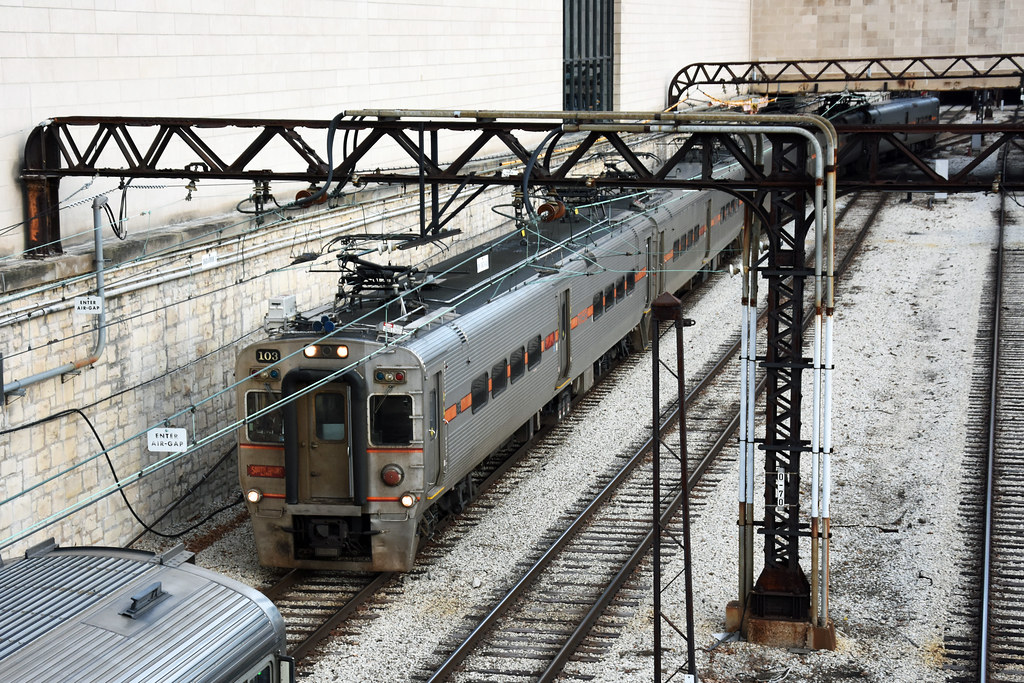Editor’s note: ImpactAlpha has partnered with HIP Investor to highlight upcoming bond issues with social and/or environmental significance. Disclaimer: Nothing in this post or on ImpactAlpha.com shall constitute an offer to sell or solicitation of an offer to buy bonds.
- CUSIP bond identifier: 66528PCM8
- Issuer: Northern Indiana Commuter Transportation District
- Obligor: Northern Indiana Commuter Transportation District
- Impact entity rated by HIP: Northern Indiana Commuter Transportation District (Transit Agency), IN
- Muni sector: Transit Agencies
- Closing date: 03/07/2024
- Bond amount: $40,925,000
- Coupon: 5%
- HIP Impact Rating: 64.3%
- Opportunity Zones located in the issuing entity: 181 Opportunity Zones , encompassing 607,644 citizens (of 5,087,072 citizens in Cook County, Illinois)
- UN SDG Rating by HIP (on 100 point scale):
- SDG 13 Climate Action: 80.0%
- SDG 3 Good Health and Well Being: 70.2%
- SDG 9 Industry, Innovation, and Infrastructure: 70.1%
- Climate Threat Resilience Rating: 59% on 100-point scale = “moderate climate risk”
Northern Indiana rail transit bond
The railway entity Metra, with a Lake Michigan regional network comprising 11 lines and 242 stations, forms an indispensable part of Chicago’s transportation infrastructure. Among its lines, the South Shore Line (SSL) is a vital link connecting Chicago with the Indiana suburbs and city of South Bend, catering to daily commuters and occasional riders.
This muni bond from the Northern Indiana Commuter Transportation District aims to address critical infrastructure needs, including the Double Track Project. By adding a second track from Gary, Indiana to Michigan City, Indiana and upgrading existing infrastructure, this expansion promises faster, more frequent, and reliable train service, benefiting commuters and communities across Lake, Porter, and La Porte counties. Expected are 14 more weekday trains, and 33 minute reduction in peak-period travel times between Michigan City Indiana and Millennium Park in Chicago.
Additionally, the West Lake Corridor Project is poised to extend further south between Dyer and Hammond, Indiana, reaching high-growth areas in Lake County, Indiana. This extension not only expands transportation options but also fosters economic development, job creation, and improved accessibility for residents in the region.
HIP Impact Analysis
HIP Investor now evaluates nearly 2,400 U.S. transit agencies’ social and environmental impacts. To achieve data-driven reality, sources include the Federal Transit Administration National Transit Database, as HIP calculates 17 impact metrics, such as safety, GHG emissions displaced, fare affordability, transit accessibility (particularly for workers of color and low-income workers) and reliability.
This Indiana issuer’s overall HIP impact rating of 64.2% (on 100 point scale) surpasses both the national average of 42.1% and the average of similar urban transit agencies at 53.6%. Notably, this issuer is one of only 13 agencies nationwide with 100% electric propulsion, resulting in a substantial reduction in GHG emissions within its service area. Displacement of GHGs of 29.1 kg of carbon dioxide equivalent (CO2e) per person significantly outperforms the national average of 10.6 kg CO2e displaced per capita. On climate threat resilience, this Indiana transit agency’s rating is 59% (above average) on a 100 point scale, indicating moderate risks and some resilience factors in the region.
This issuer (NICTD) benefits from substantial federal and local government funding, receiving $209.50 per unlinked (no transfers) passenger trip per year, well above the national average of $53.10 funding per year. Fleet management efficiency is evident with no vehicles exceeding their useful life benchmark, and minimal mechanical failures, resulting in a 99.7% rating.
NICTD received a score of 11 (moderate) of 20 (best) for proximity (distance to nearest transit stops), indicating closer proximity and greater walkability to transit stops, surpassing the national average of 5 (longer distances). However, the agency fell behind its counterparts in certain areas, particularly in providing transit accessibility for the total population and low-income workers. Compared to the national average of 10.6%, only 5.5% of the population in its service area had access to transit within a 45-minute transit and walking commute. Similarly, accessibility for low-income workers stands at 4.6%, slightly below the national average of 6.5%.
Safety reporting is an area of concern as NICTD did not provide reports on safety events, including any injuries or fatalities that may have occurred. Given that HIP values data transparency and penalizes the absence of such information, NICTD received a score of 0% for no data on safety.
Ripple Effects: Environmental, social and economic benefits
Environmental benefits: By promoting public transportation and reducing vehicular emissions, this issuer contributes to cleaner air and a healthier environment. A focus on sustainability and wetland mitigation underscores a commitment to preserving natural resources and minimizing ecological impact.
Social benefits: Enhanced commuter rail service translates to improved mobility and accessibility, benefiting individuals from diverse socioeconomic backgrounds, including the Black population, which constitutes a significant portion of South Chicago’s demographic landscape. Moreover, the development around station areas, including public spaces and recreational amenities, fosters vibrant communities conducive to a live-work-play lifestyle.
Economic benefits: Investments in transportation infrastructure have far-reaching economic implications. The Metra transit-focused bond is poised to create local jobs, stimulate business investments, and attract talent to the region. By providing faster and more reliable access to employment centers in Chicago and surrounding areas, the projects can unlock opportunities for economic growth, particularly in underserved communities.
Indiana bond is “net positive”
This issuer (NICTD), which rates 59% (net positive) on a 100 point scale, has demonstrated strength in environmental impact through its use of 100% electric propulsion for its fleet and significant reductions and displacements of greenhouse gas emissions. Yet there remains room for improvement in transit accessibility, particularly for vulnerable populations such as low- income workers and individuals with disabilities.
NICTD aims to address infrastructure challenges while establishing the foundation for sustainable growth and development by expanding regional transit. Investment in regional mobility can contribute to more inclusive communities and local economic development.
Stella Yao is an ESG Impact Investing Analyst at HIP Investor Ratings LLC.
DISCLOSURES: HIP Investor Inc. is a state-registered investment adviser in several jurisdictions, and HIP Investor Ratings LLC is an impact-ratings firm evaluating impact and ESG on 126,000 municipal entities, 265,000 muni-bond issuances, and 14,000 corporates for equities and bonds. HIP Impact Ratings are for your information and education – and are not intended to be investment recommendations. Past performance is not indicative of future results. All investments are risky and could lose value. Please consult your investment professionals to evaluate if any investment is appropriate for you, your goals, and your risk-return-impact profile.











